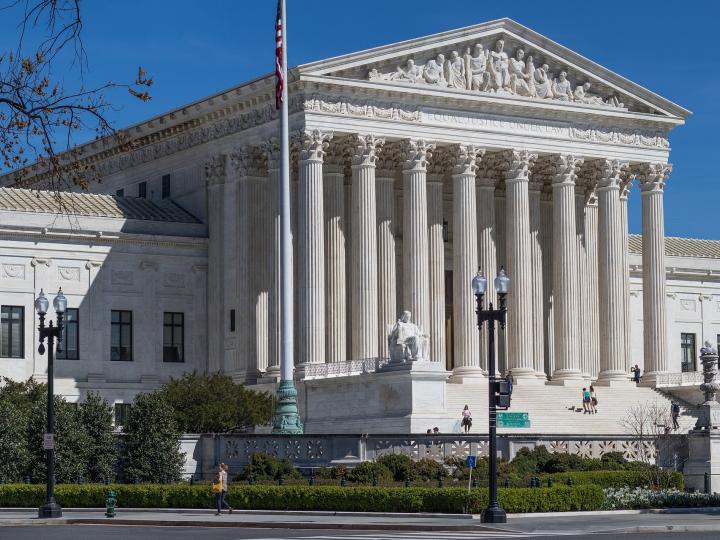Recently, the U.S. Supreme Court held that “the application of physical force to the body of a person with intent to restrain is a seizure even if the person does not submit and is not subdued,” and cited the Restatement of the Law, Torts, in reasoning that the common law considered the mere touching of an arrestee to be a seizure by force.
In Torres v. Madrid, No. 19-292 (Mar. 25, 2021), a New Mexico woman was getting into her car in her apartment complex’s parking lot when she was approached by two state police officers who had arrived at the complex to execute an arrest warrant for another woman; believing that the officers were carjackers trying to steal her car, she accelerated to try to escape them. The officers fired 13 shots at her, striking her twice in the back, but she continued to drive away. The woman filed an action for damages under 42 U.S.C. § 1983 against the officers, alleging that they used excessive force and therefore the shooting was an unreasonable seizure under the Fourth Amendment.
The U.S. District Court for the District of New Mexico granted summary judgment to the officers, and the U.S. Court of Appeals for the Tenth Circuit affirmed, reasoning that “a suspect’s continued flight after being shot by police negates a Fourth Amendment excessive-force claim.”
In a five-to-three opinion, the U.S. Supreme Court vacated the decision of the Tenth Circuit and remanded, holding that “the application of physical force is a seizure if the force, despite hitting its target, fails to stop the person,” and concluding that “the officers seized [the petitioner] for the instant that the bullets struck her.” Chief Justice John G. Roberts, writing for the Court, explained that, in California v. Hodari D., 499 U.S. 621 (1991), the Court “interpreted the term ‘seizure’ by consulting the common law of arrest, the ‘quintessential ‘seizure of the person’ under our Fourth Amendment jurisprudence,”’ and that “the common law treated ‘the mere grasping or application of physical force with lawful authority’ as an arrest, ‘whether or not it succeeded in subduing the arrestee.’” The Court reasoned that it was appropriate to look to the common law of arrest for understanding what was considered an unreasonable search and seizure when the Fourth Amendment was adopted, because an arrest was a seizure of a person, and historically, under English law and in early American courts, the slightest application of force or touch was sufficient to constitute an arrest. The Court noted that the application of force from a distance, or an arrest made by touching with an object, such as the shooting in this case, did not alter its analysis.
The Court rejected the officers’ proposed rule that seizure required intentional acquisition of control, reasoning that such a test would be “inconsistent with the history of the Fourth Amendment and our cases,” which did not provide a different rule for criminal arrests than the “mere touch” rule for civil arrests at common law. The Court observed that “[t]he tort of false imprisonment, which the dissent rightly acknowledges as the ‘closest analogy’ to an arrest without probable cause’ . . . reinforces the conclusion that the common law considered touching to be a seizure.” Citing Restatement of the Law, Torts §§ 35 and 41, the Court pointed out that, while false imprisonment required “confinement,” such as “taking a person into custody under an asserted legal authority,” confinement “demanded no more than that the defendant ‘had for one moment taken possession of the plaintiff’s person.’” Furthermore, under § 41, Comment h, ‘“the touching alone of the person against whom [legal authority] was asserted would be sufficient to constitute’ confinement by arrest when the authority was valid.” Chief Justice Roberts explained that the Court often relied on civil cases for trespass or false arrest when interpreting the Fourth Amendment, because arrests in civil actions were more common in the founding era, and the Court “[saw] no reason to break with our settled approach in this case.”
Read the full opinion here.
